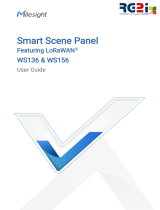
Contents
1. Product Introduction ......................................................................................................................... 5
1.1 Overview ...................................................................................................................................5
1.2 Key Features ............................................................................................................................ 5
2. Hardware Introduction ...................................................................................................................... 6
2.1 Packing List ..............................................................................................................................6
2.2 Hardware Overview ................................................................................................................. 6
2.3 Reset Button and LED Indicator ..............................................................................................6
2.4 Dimensions (mm) ....................................................................................................................7
3. Power Supply .....................................................................................................................................7
4. Operation Guide .................................................................................................................................7
4.1 NFC Configuration ................................................................................................................... 7
4.2 LoRaWAN®Settings ................................................................................................................ 8
4.3 General Settings .................................................................................................................... 10
4.4 Advanced Settings ................................................................................................................ 11
4.4.1 Calibration Settings .................................................................................................... 11
4.4.2 Threshold Settings ..................................................................................................... 11
4.4.3 Data Storage ............................................................................................................... 12
4.4.4 Data Retransmission .................................................................................................. 13
4.4.5 Milesight D2D Settings ...............................................................................................14
4.5 Maintenance .......................................................................................................................... 16
4.5.1 Backup .........................................................................................................................16
4.5.2 Upgrade ....................................................................................................................... 17
4.5.3 Reset to Factory Default .............................................................................................17
5. Installation Instruction .................................................................................................................... 18
5.1 Installation ............................................................................................................................. 18
5.2 Factors Affecting Accuracy .................................................................................................. 20
6. Device Payload ................................................................................................................................ 20
6.1 Basic Information .................................................................................................................. 20
6.2 Sensor Data ........................................................................................................................... 21
6.3 Downlink Commands ............................................................................................................ 22
6.4 Historical Data Enquiry ..........................................................................................................25





















